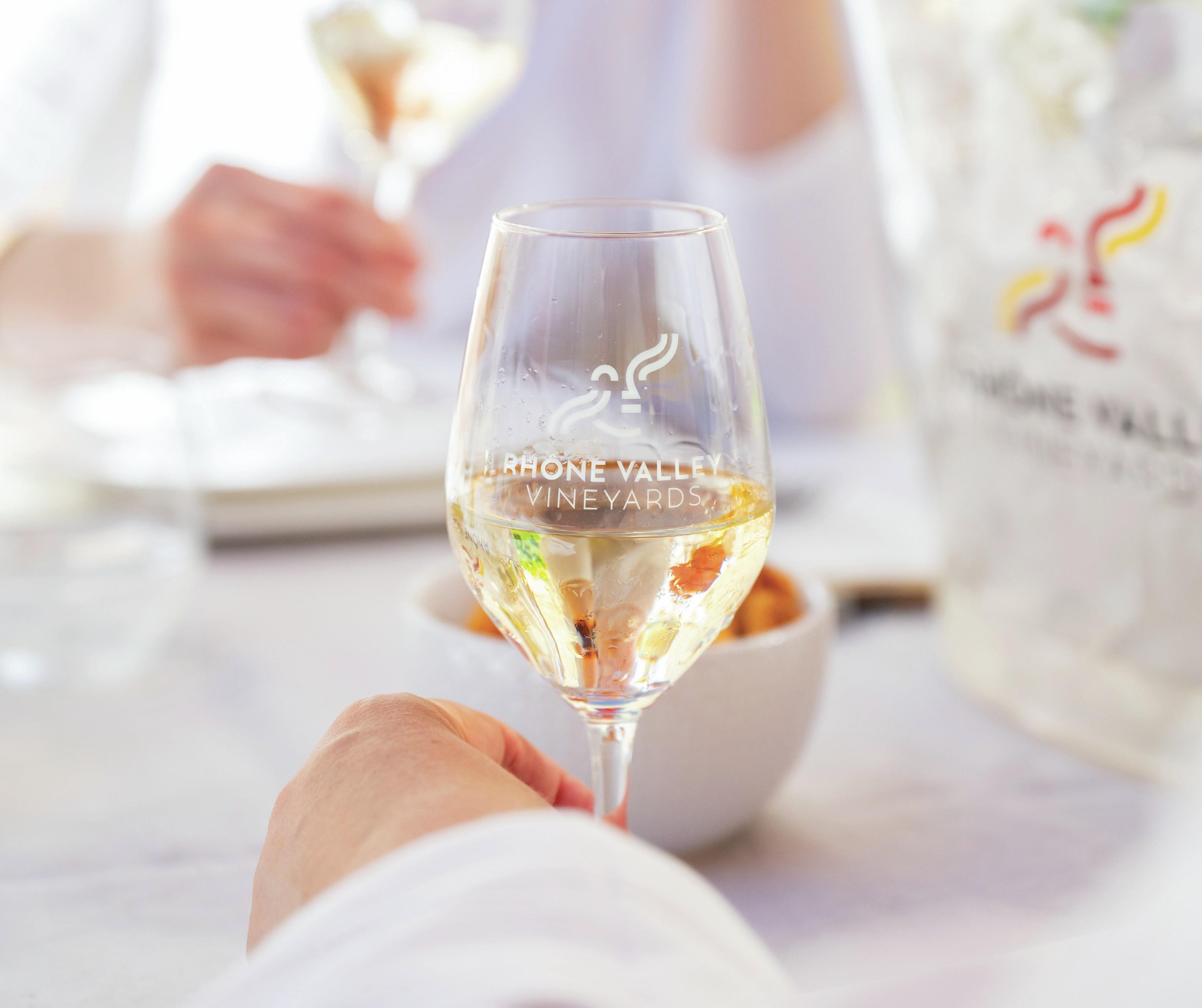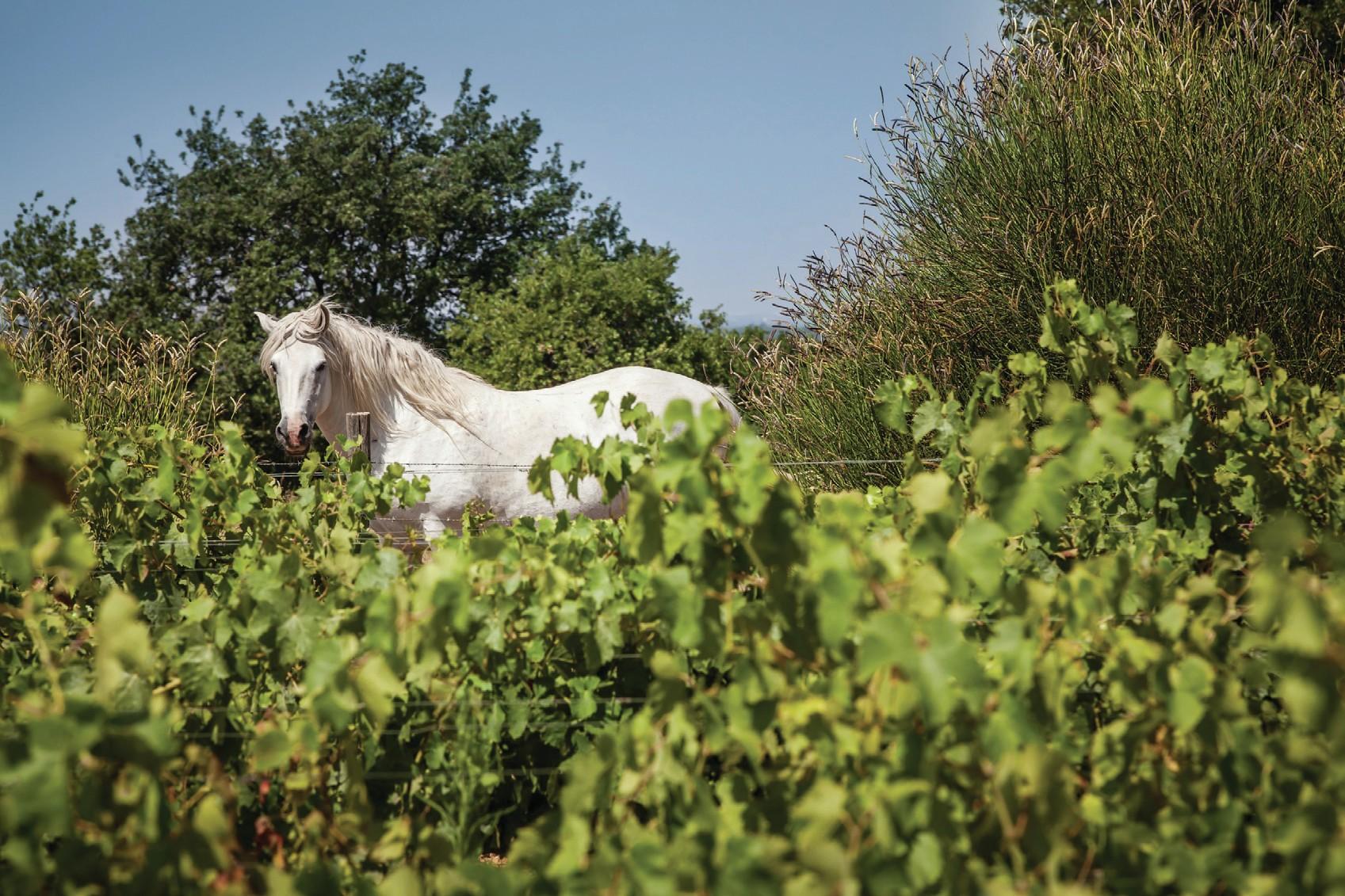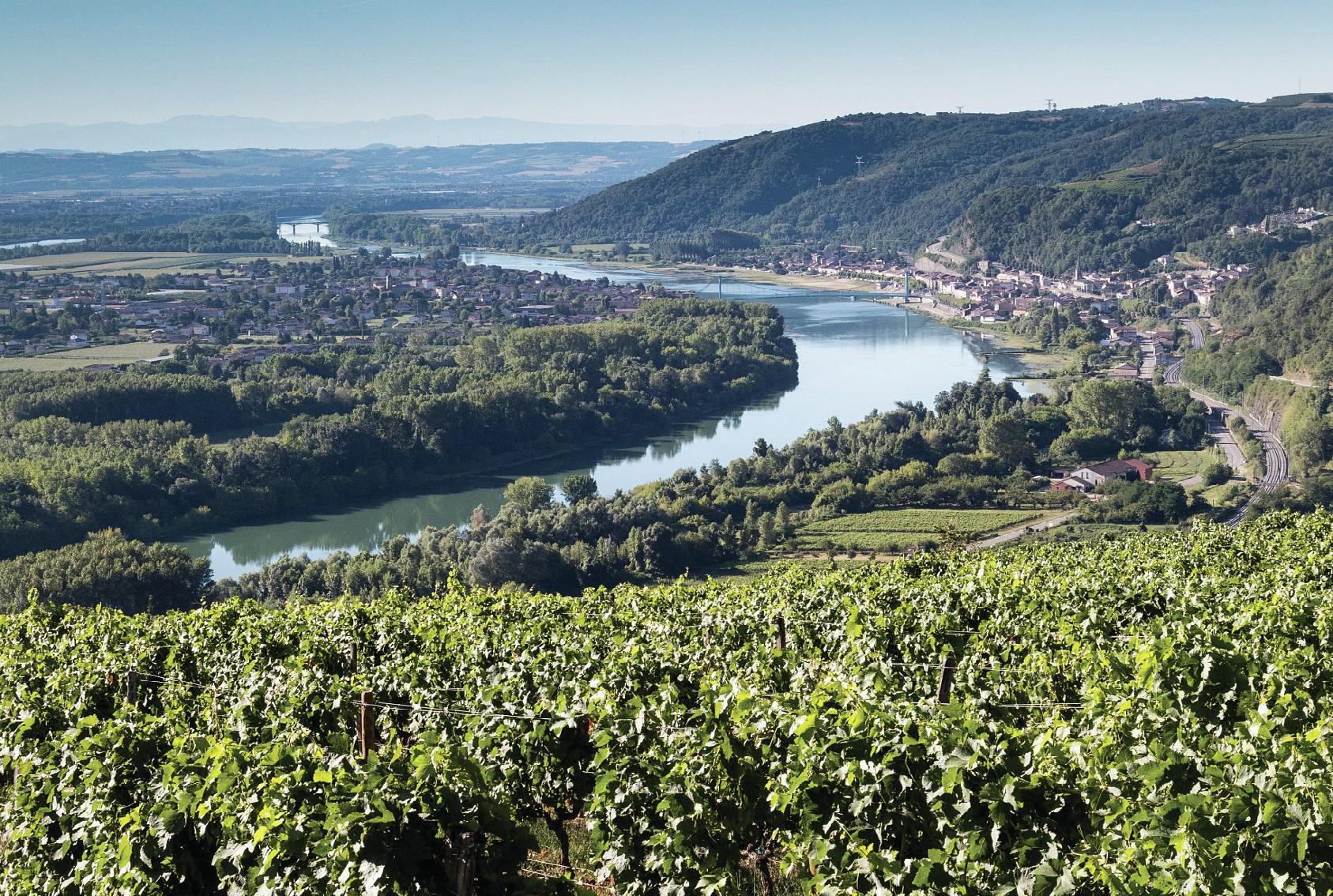When in Rhône: are white wines the French region’s next gem?
France’s Rhône Valley has for years been synonymous with red wines, but now that is all about to change – as the region and its producers put the spotlight on the diversity and elegance of its whites.

“THE RHÔNE Valley is a treasure trove of diversity and surprises,” says Ann Vermeersch, winemaker and manager at winery LePlan-Vermeersch. Spanning more than 64,000 hectares of vineyards, making it France’s second-largest region behind Bordeaux, it’s no surprise that the Rhône Valley is characterised by diversity.
The territory plays host to well-known AOCs rubbing shoulders with little known gems, and the variation of terroirs, grape varieties and blends remains the driving force.
Rhône Valley vineyards are planted with 34 varieties in total: 20 reds and 14 whites.
Red wines, often seen as synonymous with the region, represent 74% of production, followed by rosés at 14% and whites at 12%.
The region’s whites may not dominate plantings, but they are not to be ignored. “The rising prominence of its white wines adds a new layer of excitement,” says Vermeersch, “promising even more memorable Rhône moments for wine lovers everywhere to savour.”
Production of white wines is on the rise. Over the last decade, white wine production in the Rhône Valley has risen by 50%. Now, it’s a question of the Rhône breaking free from the “red wine” image to reveal the great potential of the region’s whites.
Philippe Pellaton, president of Inter Rhône, the body which represents the region’s winemakers, has positioned white wines as the new focus. “After deploying Rhône in White events with 750 professionals in eight markets last year, we are pursuing our objective for the coming decade: to establish the Rhône Valley as a major white wine-producing region, a region as prestigious as it is famous,” he says. The aim is to almost double sales volumes, from 174,000 hectolitres in 2020/21 to 300,000hl by 2031.
Covering such a large area with so much range, Rhône Valley white wines have been broken down into three styles to make it easier for consumers to find the wine they’re looking for. These three styles – ‘lively and fresh’, ‘fruity and round’ and ‘rich and complex’ – epitomise just how much the Rhône Valley has to offer in white.
Constance Slaughter, winemaker at Château de Mille, believes that the diversity of grape varieties in the Rhône Valley is “one of the most exciting things for winemakers” in the region, “enabling us to produce the wines we love, with distinct profiles”.
Château de Mille produces one of its whites from old Ugni Blanc and Clairette vines. “We have added Vermentino, Grenache Blanc, Marsanne and Bourboulenc, and look forward to creating a gorgeous, crisp blend this year,” Slaughter explains.
OPPORTUNITIES IN THE UK
“Since 2023, a number of exclusively white events have been held in the UK to train, educate and communicate about the wine profiles and potential of Rhône Valley vineyards,” says Pellaton. “In 2023, we affirmed our ambition to position the white wines of the Rhône Valley in the spotlight, an ambition shared by all stakeholders in the AOC Côtes du Rhône and Rhône Valley vineyards.” As far as exports are concerned, the UK is positioned as the second-largest overseas market for Rhône Valley wines in volume terms, representing 15% of total exports.
The Rhône Valley wine strategy aims to market 50% of volumes internationally (all colours combined) by 2035.

Spotlight: Costières de Nîmes
• The only Rhône Valley appellation influenced by the sea, Costières de Nîmes was recognised as an appellation in 1986. With soils similar to those of Châteauneuf-duPape , the city of Nîmes lies to its north, and to the south is the Camargue, a protected natural area of considerable biodiversity.
• The climate is Mediterranean, characterised by a period of semidrought from June to the end of August. The marine influences of the Mediterranean introduce cooler air. Rainfall is infrequent, and the Mistral wind has a naturally cleansing effect.
• The appellation has made pioneering progress in terms of environmental and landscape protection; 25% of its vines are now grown organically as a result of green initiatives launched over 10 years ago – the Costières de Nîmes Environmental and Landscape Charter being just one of them.
• Broken down by colour, production in the southernmost appellation in the Rhône Valley consists of 47% red wines, 42% rosé and 11% white.
• Whites can be vibrant and expressive, mellowing with age to give complex, rounded wines. Grenache blanc, Roussanne and Marsanne are the key white varietals, and may be supplemented with auxiliary varietals Bourboulenc, Clairette, Rolle (Vermentino) and Viognier.

Spotlight: Saint-Joseph
• Saint-Joseph is the second-largest Northern Rhône cru with a surface area of 1,357 hectares. Its particularity is that the appellation is very extensive, following the natural corridor formed by the Rhône river: spanning 60km from north to south, its terroir is characterised by steep slopes and terraces with varying exposures.
• From Chavanay in the north to Guilherand-Granges in the south, terraces form the fabric of the Saint-Joseph vineyards. This mischievous, sloping terroir has forced man to shape it, the better to preserve it. The terraces help combat soil erosion, flooding and fire. The low stone walls that support them help create a mosaic of microclimates and exceptional terroirs.
• The soil of Saint-Joseph is essentially composed of granite. This hard rock covers most of the 1,400ha of the AOC. In places, it meets clay-limestone enclaves on the heights or loess. This land, renowned for its red wines, also harbours two white grape varieties that express the finesse of geological variations.
• The land has been a source of wine production for more than 2,000 years, but its modern history began in 1956 with the birth of AOC Saint-Joseph.
Partner Content
• White wines make up 14% of production, of which 67% is Marsanne while the remaining 33% is Roussanne. AOC rules dictate that white wines must be made using Marsanne and/or Roussanne, but while 100% Marsanne wines are common, pure Roussanne expressions are rare.
• AOC Saint-Joseph exports around 13% of its total 51,500 hectolitres. The UK is the appellation’s third-most important export destination.
Read on for a selection of tasting notes for diverse Rhône Valley white wines, written by Marc Robert.
1. BROTTE BORD ELEGANCE – AOC COTES DU RHÔNE VILLAGES LAUDUN

Fresh and bright pear fruit on the nose, this feels enlivening to smell. Silky, medium-bodied style and bright acidity. Very classically Laudun in its freshness, tension, minerality and straight profile – it has good cut and vibrancy.
2. GUIGAL – AOC CONDRIEU

A textbook example of Condrieu, this wine has jasmine, orange flower water and mango aromas that follow through onto the rich, plump and slippery palate. Intense and concentrated, with incredible length, all balanced by bright acidity.
3. CHÂTEAU MOURGUES DU GRÈS CAPITELLE BLANC – COSTIÈRES DE NÎMES

A supremely elegant and silky blend of Grenache Blanc, Marsanne and a splash of Rolle (aka Vermentino). Medium-bodied, very wellbalanced, mineral and beautifully refined, it’s a wine that shows the incredible potential for Costières de Nîmes whites.
4. MAS CARLOT GÉNÉRATIONS – COSTIÈRES DE NÎMES

This has a lovely sense of freshness and pure Costières de Nîmes character – proudly Mediterranean, with freshness and perfect balance. A very welljudged blend of Marsanne, Roussanne and Viognier.
5. MAS DES BRESSADES EXCELLENCE – COSTIÈRES DE NÎMES

A full-bodied style of white from the rolled pebbles of Costières. Floral notes on the nose lead to rich, ripe pear and peach flavours, with complex toasty notes in the background from fermentation in oak barrels.
6. CHÂTEAU DE NAGES JT – COSTIÈRES DE NÎMES

From an estate with a commitment to regenerative viticulture, this blend of Roussanne, Viognier and Grenache has notes of honeysuckle, ginger and subtle brioche. It’s bright, fresh and tense, with a long finish. So drinkable.
7. M CHAPOUTIER LES GRANILITES BLANC – AOC SAINT-JOSEPH

From the southern part of Saint-Joseph, this pure Marsanne has all the finesse, tension and minerality you’d hope for from this granitic region. Perfumed mango aromas cut through with zesty acidity. This has intense flavour and impact.
8. GUY FARGE VANIA – AOC SAINT-JOSEPH

Silky pineapple, apricot and pear flavours shine through in this mediumto full-bodied white Saint-Joseph, a blend of 80% Marsanne and 20% Roussanne. Generous and ripe in style, with subtle, noble, bitter notes on the finish.
9. CAVE SAINT DÉSIRAT CÔTE DIANE – SAINT-JOSEPH

Arich style of SaintJoseph, enjoyably ripe, with juicy mango fruit and a touch of butterscotch. Opulent, creamy texture and a long finish, with understated vanilla from the oak fermentation and maturation.
Related news
Strong peak trading to boost Naked Wines' year profitability




